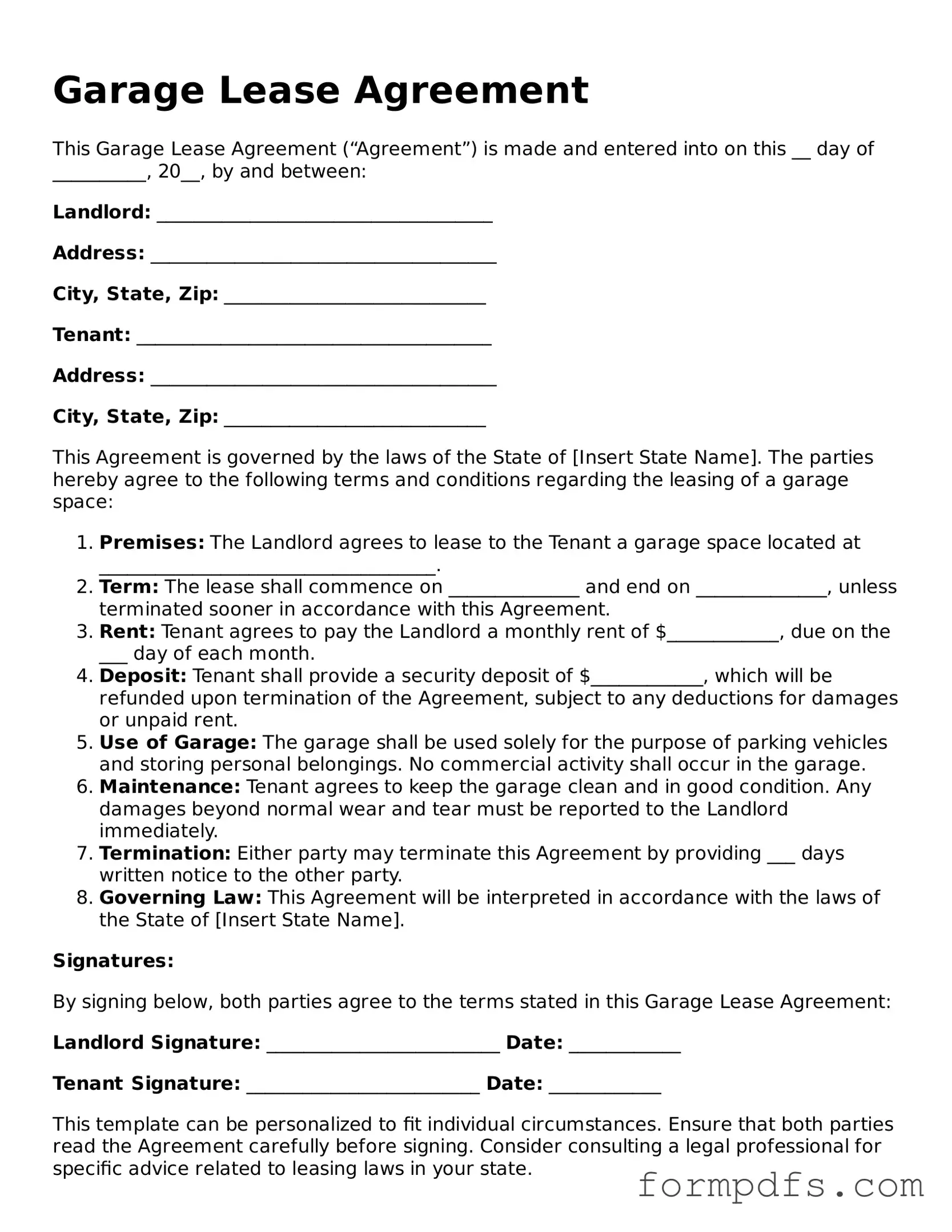What is a Garage Lease Agreement?
A Garage Lease Agreement is a legal document that outlines the terms and conditions under which one party (the lessor) allows another party (the lessee) to use a garage space. This agreement typically includes details such as the rental amount, duration of the lease, and responsibilities of both parties regarding maintenance and repairs.
Who typically uses a Garage Lease Agreement?
Individuals or businesses that own a garage and want to rent it out often use this agreement. It’s also useful for renters who need a secure place to store their vehicles or other belongings. Both parties benefit from having a clear understanding of their rights and obligations.
What should be included in a Garage Lease Agreement?
A comprehensive Garage Lease Agreement should include the following elements: names and addresses of both parties, description of the garage, rental amount and payment schedule, lease term, security deposit details, maintenance responsibilities, and terms for termination of the lease. Including these details helps prevent misunderstandings later on.
How long is a typical lease term for a garage?
Lease terms can vary widely. Some agreements are month-to-month, while others might last for six months or even a year. It’s important to choose a term that fits both parties' needs. Flexibility can be beneficial, especially if either party's circumstances change.
What happens if the rent is not paid on time?
If the rent is not paid on time, the lease agreement should specify the consequences. This may include late fees or the right to terminate the lease. It’s crucial for both parties to understand these terms upfront to avoid disputes later.
Can the lease be renewed?
Many Garage Lease Agreements include provisions for renewal. This allows the lessee to continue using the garage under the same terms, provided both parties agree. It’s a good idea to discuss renewal options before the lease expires.
What if I need to terminate the lease early?
If either party needs to terminate the lease early, the agreement should outline the process. This may include giving notice in advance or paying a termination fee. Understanding these terms is essential to avoid any legal complications.
Is a security deposit required?
Many landlords require a security deposit to cover potential damages or unpaid rent. The amount can vary but is often equivalent to one month's rent. The agreement should specify how the deposit will be handled, including conditions for its return at the end of the lease.
What if there are damages to the garage?
The lease agreement should clearly state who is responsible for repairs and maintenance. Typically, the lessee is responsible for any damages they cause, while the lessor handles structural issues. Having these responsibilities laid out helps prevent disputes over damages.
Can I use the garage for purposes other than parking?
Whether you can use the garage for other purposes, such as storage or a workshop, depends on the lease agreement. Always check with the lessor and ensure that any additional uses are permitted in the contract. This helps avoid any potential conflicts during the lease term.
